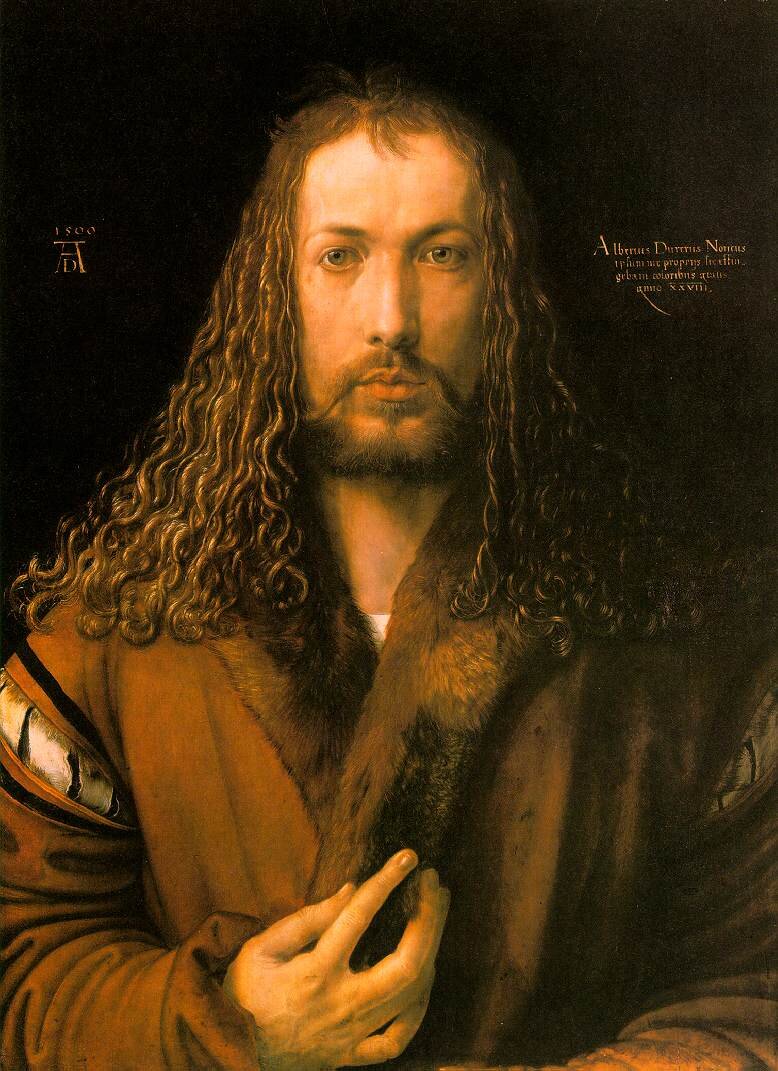Henri Matisse, Goldfish and Palette, 1914
Years ago, when the Museum of Modern Art had a large room filled only with paintings by Matisse and a bench against the wall by windows, I would sit with my painting teacher, the man who led me to Christ, to look at people. When they approached a painting of a still life on the left wall, we marked where they stood to enjoy it.
Again, someone would stand to the right of the center of the painting and within a step of where the last person stood. “See?” my teacher would say. “That is where Matisse stood in relation to the still life when he drew it.”
By this he meant that the lines which Matisse made from the point of his beginning—you could call it a vanishing point—direct a viewer to stand where the artist stood.
In the gospels, one can see that Jesus’ point of beginning, call it a vanishing point if you like, is God the Father. The Father is always Jesus’ point of reference. If you look at Jesus, you face the Father.
William Blake (1757-1827) Christ’s Entry into Jerusalem, Glasgow Museums
A couple of days ago was Palm Sunday. Several people discussed their spiritual journeys with me on that day on which we remember Jesus’ journey into Jerusalem where he would die. The conversations seemed to me to be no coincidence. Just as with the spectators in the museum and Matisse, when we enter Jesus’ life through the art of liturgy his life orients us.
The art of Jesus’ life is not limited in time or dimension, rather it is a Way that he welcomes us to. Jesus’ point of reference, God the Father, the One with whom he was at the beginning, is always carried within himself, all the way to the cross.
As with the still life by Matisse, when we enter Jesus’ life, we become centered in the beginning. And we become carried forward. With Jesus as the Way tucked inside ourselves, notwithstanding the global pandemic that stopped all of us in our tracks, in spite of all division and death, our lives find direction.
To love this life and so lose it, as Jesus said, or to hate this life and keep it eternally, as He also said, speaks to there being no way to go except forward, from birth to death and along the points that lie between. How will we go? is the question.
Poetry, which our poetry mission consultant Evan Craig Reardon says is always about death, or love, or poetry—“poetry” means creative process, I would say—is a gift that many of us bring on our way. Similar to what the mystery of the cross of Christ bears, poetry, born of mystery, also holds space for mystery. It can seem that a poem willingly lays itself down to bear our life, and reading poetry can become a way of life.
Here is what Evan has to say about the role of poetry in our mission in the arts:
Poetry is an integral part of the Christian faith. From the Psalms to Simeon’s song in the Gospel of Luke, through to John Milton and the Metaphysical Poets, and in modern times with TS Eliot and Denise Levertov, poetry has long played an essential role in articulating the Christian faith. Poetry expresses a kind of thinking about God and Christ, about the difficulty of living that way of life, and about the beauty of holiness and the majesty of praise.
The Poetry Mission at the Cathedral of All Saints seizes on this legacy of profound creativity to lead contemporary Christians into a deeper union with Christ, while still attending to the vision of poetry in itself. Poetry is ultimately a discourse about God in the same vein as philosophy and theology, but a unique way of leading thought into ever deeper communion with God and God's Mystery.
You, dear audience, I know is not one that must be sold on the benefits of reading, but, like me, you might feel intimidated by poetry. However this finds you, I want to invite you to join us for the Hidden Cathedral Poetry Celebration—an online series of readings and ruminations around contemporary Christian poetry which will last all Eastertide. I hope you will enter this journey with us and allow yourself to be carried along.
Poet Marly Youmans has been working away at preparing a series of diverse offerings for us. You can hear her invitation and introduction to her series by clicking HERE.
If you received this blog post in your inbox, you are already subscribed to be part of the Hidden Cathedral Poetry Festival. If not, you can do so below. And please forward this to a friend.
And, a note for those interested in studying spiritual direction……
Here is an opportunity led by one of our past poetry presenters—Holy Ground is a program for forming spiritual directors led by Sister Katherine Hanley, CSJ, PhD, known at our cathedral for leading a workshop in the poetry of George Herbert in September of 2020. Sister Kitty and her fellow presenters are currently deciding if they will offer the program again in October of 2021. If you are interested, click HERE for a pdf to learn more.
May you have a blessed Holy Week. See you for poetry in joy of the Resurrection on Monday when we hear our first poet, Leonard A. Slade, Jr. read with his magnificent voice from his most recent book, Selected Poems for Freedom, Peace, and Love.
~ Brynna Carpenter-Nardone, Cathedral Arts Missioner


















